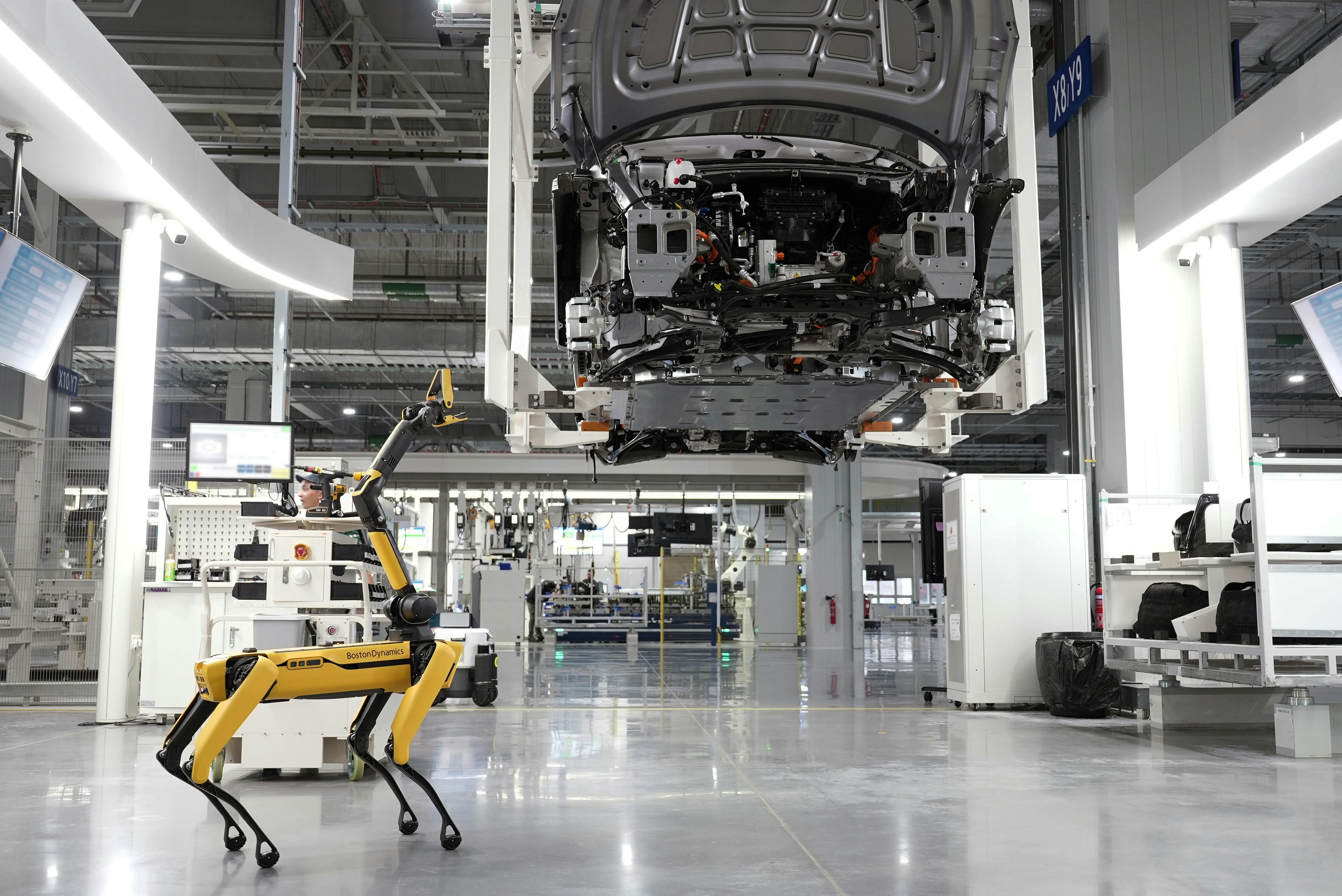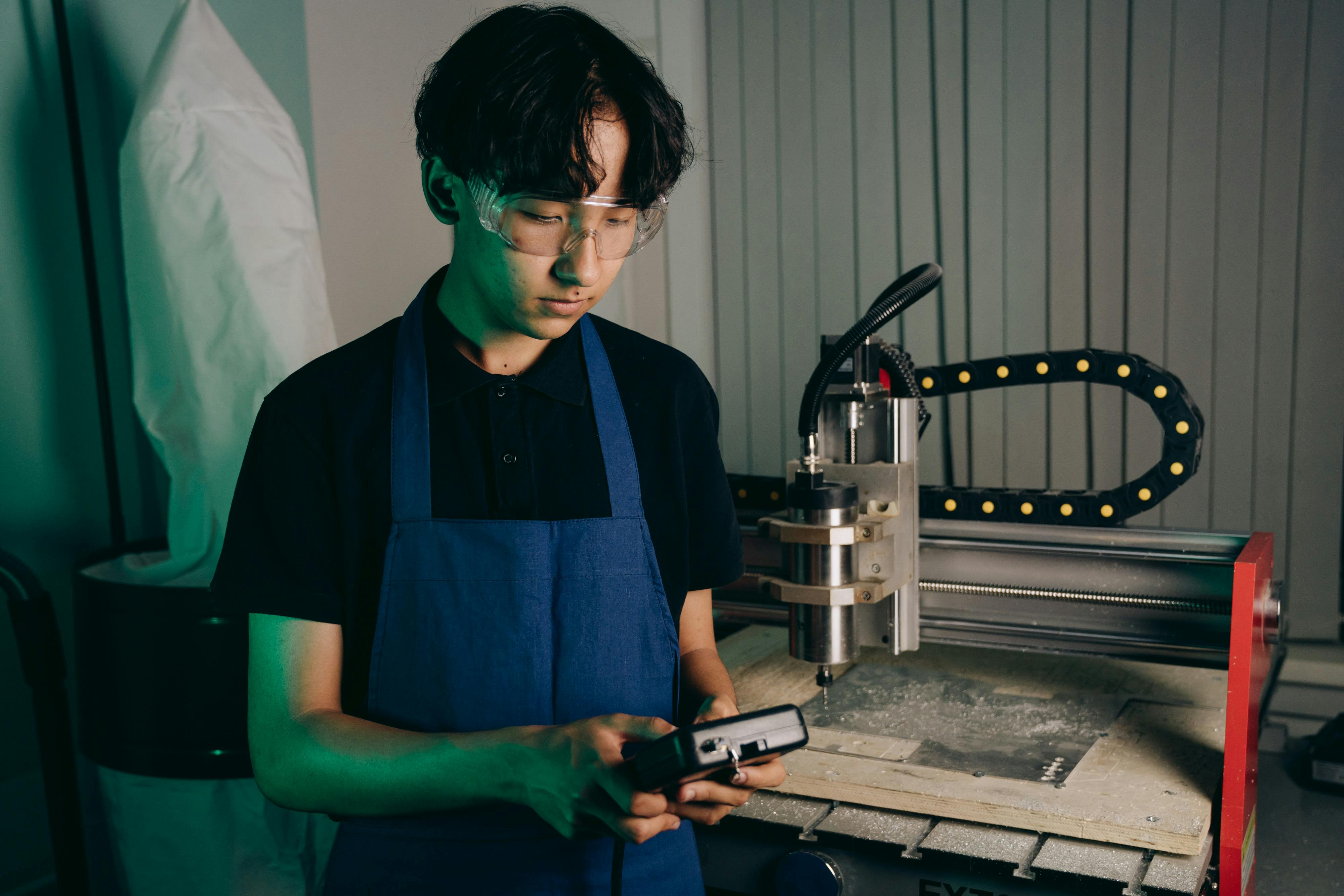Netherlands Smart Manufacturing: Full Industrial IoT Guide for Growth
What really strikes me about Dutch industry—ever since my first consultation with a Rotterdam-based precision engineering firm back in 2019—is just how fast things change. Last year, the Netherlands quietly surged ahead in European smart manufacturing rankings, thanks almost entirely to the way their midsize plants embraced industrial IoT (Internet of Things) technologies1. Funny thing is, most factory managers I talk to still think “IoT” means a few sensors bolted onto aging machines, maybe a dashboard or two. In reality? Smart manufacturing here is a living ecosystem: one powered by real-time analytics, ultra-connected supply chains, and a relentless hunger for competitive advantage. The question isn’t whether to go “smart”—it’s how to master the transformation for genuine rapid growth. I’ll be completely honest: it’s exciting, but it’s not simple.
Why the Netherlands Is a Smart Manufacturing Leader
Let me step back for a second. If you’re reading this, odds are you’re aiming for next-level operational efficiency, data-driven productivity, and serious resilience—and you want real competitive edge in the Netherlands’ “high-mix, low-volume” manufacturing climate. But why the Netherlands, specifically? Actually, let’s clarify—the Dutch have spent decades building out a world-class digital infrastructure, with government incentives explicitly aimed at streamlining manufacturing and encouraging environmental sustainability2. After a major push by the Smart Industry Programme in 2018, the growth was staggering.
Did you know?
As of early 2024, 72% of Dutch manufacturing companies use advanced IoT-based monitoring systems—with almost half piloting predictive maintenance and AI-powered analytics. That’s the highest concentration in the EU.3
Honestly, I reckon the Dutch approach works because it’s pragmatic. Managers here won’t buy into “technology-for-technology’s-sake”—they want ROI, not hype. The practical result? Factories equipped to handle custom orders, ultra-fast lead times, unpredictable demand, and regulatory twists, with a digital backbone designed for real-time pivots. In my experience, the best implementations blur the line between IT and OT (operational technology). That’s actually where mistakes happen: when digital teams can’t talk the language of machine operators (lesson learned the hard way last summer).
“Our best growth periods came when production, IT, and logistics collaborated directly through IoT platforms—misalignment kills momentum.”
Industrial IoT: Key Concepts and Dutch Context
All right, before I get ahead of myself, what exactly do we mean by “Industrial IoT” within Dutch manufacturing? Here’s the thing: it hinges on data connectivity, but the business value flows from how seamlessly you can extract, analyze, and act on machine output and supply chain activity4. That starts with:
- Real-time sensor data (predicting failures, optimizing throughput)
- Connected production lines (digital twin simulation, remote control)
- Advanced analytics (AI/ML for OEE, demand forecasting)
- Cloud/edge computing (hybrid Dutch-European cloud adoption is huge)
Key Insight
Successful Dutch smart factories center around “interoperability.” If systems don’t play nicely together—if old machines and new sensors run on separate protocols—growth stalls.5 Honestly, it took my team three pilot projects before we cracked seamless integrations with legacy Bosch and Philips equipment. What a difference!
2025 Evolution: The Smart Manufacturing Landscape
Here’s a wild stat that caught my eye. According to the EU Digital Economy and Society Index, Dutch manufacturers invest, on average, 15% more in digital infrastructure than their German counterparts—a shift accelerated by post-pandemic supply chain crises6. Ever notice how new warehouses in Amsterdam look more like state-of-the-art research labs? Actually, thinking about it differently, this regional “tech culture” isn’t just about hardware—it’s about agile management.
- Manufacturing-as-a-Service: From Mass Customization to On-Demand Production
- Digital Twins: Simulating, predicting, and optimizing entire plant layouts
- Predictive Maintenance: Shifting from reactive repairs to proactive interventions
- Circular Manufacturing: Lean, green, and cloud-connected for zero-waste goals
“Predictive analytics reduced our unscheduled downtime by 38% in six months—every minute saved is bottom line.”
Looking ahead to 2025, the Dutch ecosystem will likely see “hyperlocal supply chains,” with IoT platforms adapting to international compliance and sustainability. I go back and forth—will tech alone solve disruptions? Probably not. But those who get the integration right (systems, people, data) will outrun the competition. What excites me most is seeing innovation spread from flagship plants to everyday midsize SMEs.
Core Foundations for Rapid Business Growth
Honestly, this is where Dutch manufacturers consistently set themselves apart: by focusing on practical enablers for growth, not on pointless tech novelty. When I meet new clients in Utrecht or Enschede, the first question is rarely “What IoT devices should we buy?”—it’s “How do we actually use this data to speed up growth, minimize waste, and future-proof?” Let that sink in for a moment—technology is the means, not the end. The smartest Dutch companies anchor their rapid-growth strategies on four essentials:
- Resilient Digital Infrastructure: Investing in secure networks, scalable cloud, and interoperability7.
- People-Centric Cross-Training: Upskilling all staff—from maintenance crews to data analysts—to work with IoT systems8.
- Real-Time Decision Loops: Streaming operational data directly to supervisors for instant action.
- Scalable Pilot Projects: Testing innovations in small cells before full rollout.
Key Action Step
If you’re aiming for rapid growth, start with a pilot in your most variable production cell. Track OEE (Overall Equipment Effectiveness), use IoT for predictive scheduling, and scale what works. The big mistake? Trying to “boil the ocean”—tackle everything at once and you’ll drown in complexity.
Dutch Case Study: Smart Dairy Processing
Quick story: In 2023, a mid-size dairy plant outside Leeuwarden adopted a modular IoT platform for milk quality tracking9. Instead of a massive systems overhaul, the team focused on real-time analytics for just their bottling line. Within weeks, downtime dropped by 24% and deviations in product quality shrank by almost 70%. Their secret? Cross-functional teams—production, IT, and quality management collaborating in sprints. Honestly, it’s an approach I’ve started recommending everywhere (with some tweaks for industry-specific quirks).
Did you know?
The largest port in Europe, Rotterdam, runs more than 5,000 IoT sensors for real-time logistics, predictive maintenance, and autonomous shipping lanes. The city’s “Digital Twin” platform is a blueprint for next-generation industrial hubs.10
Implementing IoT: What’s Different in the Netherlands?
On second thought, let’s clarify one misconception: Dutch factories don’t just “connect everything.” Instead, they focus on integrated value creation within unique business models. Here’s what my experience taught me:
- Hybrid cloud adoption is the Dutch default—balancing local controls with GDPR-compliant data storage
- Automation blends with human judgment; supervisors intervene at any sign of anomaly
- Sustainability is built in: modular upgrades, energy monitoring, and circular resource pooling
I used to think “automation” would replace skilled workers. Actually, the opposite: IoT lets experts spend less time on routine checks and more time on process optimization.
Practical IoT: Common Devices, Platforms, and Data Flows
Let’s get granular for a moment. What kind of IoT infrastructure powers Dutch smart manufacturing?
| Device Type | Primary Function | Business Benefit | Dutch Usage Notes |
|---|---|---|---|
| Sensor Arrays | Monitor machine performance, detect faults | Reduce downtime, optimize throughput | Almost universal; often retrofitted to legacy equipment |
| Edge Gateways | Aggregate, preprocess local data | Speed local decisions, buffer against connectivity loss | Popular in rural/remote plants |
| Cloud Platforms | Centralize analytics, enable remote access | Unlock advanced AI, enable company-wide benchmarking | Hybrids preferred to meet EU/GDPR requirements |
| Autonomous Robots | Handle repetitive or dangerous tasks | Improve safety, increase uptime | Used mainly in “dark factories” (minimal human intervention) |
What still puzzles me sometimes is how Dutch plants avoid “data overload.” Bottom line? Strategic filtering and alerting—only showing anomalies, urgent maintenance, or key performance dips. Managers I’ve met in Haarlem have dashboards set to trigger mobile alerts for just three metrics: output, energy use, and lead time. No more, no less.
“Factory-wide IoT isn’t about connecting everything—it’s connecting what matters, when it matters.”

Scaling Industrial IoT for Accelerated Business Growth
Here’s the thing—scaling up IoT in Dutch manufacturing isn’t just about adding more sensors or ramping up data storage. It’s about orchestrating “smart” growth within the messy realities of post-pandemic Europe: shifting market demand, regulatory headaches, and a patchwork of legacy systems. Back in late 2022, I worked with a semiconductor plant in Eindhoven wrestling with exactly this problem: loads of individual IoT pilots, but no unified strategy. The actionable insight? Use scalable platforms, modular deployments, and rigorous ROI tracking from day one.11
Personal Advice
I’m partial to “start small, prove ROI, then scale.” Anything else tends to overwhelm teams—especially when the usual IT/OT silos flare up. What excites me is seeing “growth teams,” blending operations, digital specialists, and supply chain managers, working in sprints; it’s a Dutch specialty.
Building a Smart Factory in the Netherlands: Step-by-Step Process
- Assess current process maturity (map out key data gaps across IT/OT)
- Pilot a focused IoT implementation (choose just one line/cell)
- Integrate analytics & alerting platforms (real-time dashboards)
- Train workforce on cross-functional reporting/action
- Measure, benchmark, iterate; expand only what delivers bottom-line value
Sound familiar? It’s not glamorous, but it gets results. The more I look at high-performing Dutch plants, the clearer it gets: relentless iteration beats “big bang” transformations every time.
| IoT Growth Phase | Common Challenge | Dutch Best Practice | Replicability |
|---|---|---|---|
| Pilot/Trial | Low stakeholder buy-in | Showcase rapid wins on small lines | High, if cross-organizational |
| Scale-Up | Integration bottlenecks | Focus on interoperable platforms | Medium; legacy systems may limit |
| Company-Wide Adoption | Data security, privacy issues | Hybrid cloud, EU compliance, role-based data flows | High with strong leadership |
| Network Expansion | Supply chain alignment | Collaborate with logistics partners | Critical for cross-border growth |
Future Trends: Dutch Smart Manufacturing, 2025 and Beyond
Looking ahead, several trends stand out—all informed by both hands-on Dutch innovation and broader European momentum:
- AI-Driven Predictive Maintenance: Machine learning algorithms automate process refinements—a major focus for Dutch automotive and chemical plants12.
- Green Supply Chains: Sustainability isn’t just a buzzword—Dutch manufacturers are world leaders in circular business models and energy-use transparency13.
- Workforce Transformation: Lifelong learning and “upskilling for digital” are ingrained; many Dutch plants have dedicated training centers onsite.
- International Compliance: Adapting to evolving EU standards plus new AI and data privacy legislation.14
“As someone who grew up with paper-based reporting, it’s wild seeing sensors and AI dictate not just maintenance but strategy. We still need human judgment—but this tech sets new standards for what’s possible.”
Pause for a second—consider this: according to McKinsey, Dutch manufacturers who fully digitize can improve EBIT margins by up to 12% over three years.15 I know, numbers can feel abstract. But I remember reviewing a plant’s financials after their first full IoT rollout; the actual year-on-year profit change was undeniable. That’s why the drive toward smart manufacturing here feels—well—like a cultural imperative, not just an optional upgrade.
Actionable Takeaways & Next Steps for Dutch Smart Manufacturing
All right, where does this leave us? I’ve worked with Dutch plants from Groningen to Tilburg, and if there’s one lesson every team has taught me, it’s this: Transformation is a marathon, not a sprint. Actually, let me clarify—the fastest gains still come from tight focus and pragmatic execution. The Netherlands proves that “smart” means more than just having the latest tech; it’s about weaving digital, human, and business operations together, relentlessly refining for growth you can measure.
Critical Checklist for Rapid IoT-Driven Growth
- Map your maturity: Where are your data gaps, and what can you pilot immediately?
- Build cross-disciplinary teams: Factory, IT, supply chain, and compliance collaborate early.
- Start small, prove value, and scale only what delivers clear ROI.
- Invest in ongoing training; leadership must model lifelong digital learning.
- Prioritize security and EU data compliance from day one.16
- Remember: tech is a tool—not a goal.
Reflecting on Real-World Impact
What excites me most, having seen dozens of Dutch teams tackle transformation since 2019, is the sheer creativity and tenacity. One operations manager explained how his “IoT dashboard challenge” each month became a rally point; every team member tried to spot a cost-saving tweak overlooked by usual reports. Actually, thinking about my early missteps, I realized I once pushed for fancy analytics when a simple energy consumption alert made a bigger difference. The best Dutch results? They come from blending analytics, intuition, and open discussion.
“Dutch manufacturing shines globally because we invest first in minds, then in machines. The tech accelerates human ingenuity—it doesn’t replace it.”
Future-Proofing Your Dutch Smart Manufacturing Strategy
Let’s be real: industry, tech, and regulation are constantly shifting. The smart factories growing fastest in the Netherlands are those designed for continuous improvement, regular upgrades, and strategic openness to change. And, based on my most recent conversations, integrating sustainability and circular supply models is no longer optional for Dutch competitiveness.
- Upgrade in modules—avoid big-bang overhauls; modular systems can evolve as needs shift
- Embed sustainability—monitor waste, energy use, and resource cycles right from IoT data
- Scan for EU regulatory updates; privacy/AI rules shift each year
- Network with peer plants—Dutch sector forums are goldmines for best practices
Did you know?
The Netherlands Smart Industry field labs now include more than 40 innovation hubs, with collaborative pilot projects open to international partners. These labs set the standard for sector-wide transformation—and offer real opportunities for cross-border scaling.17
References



